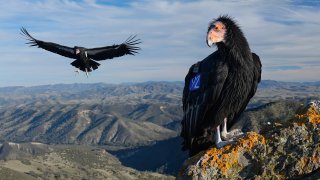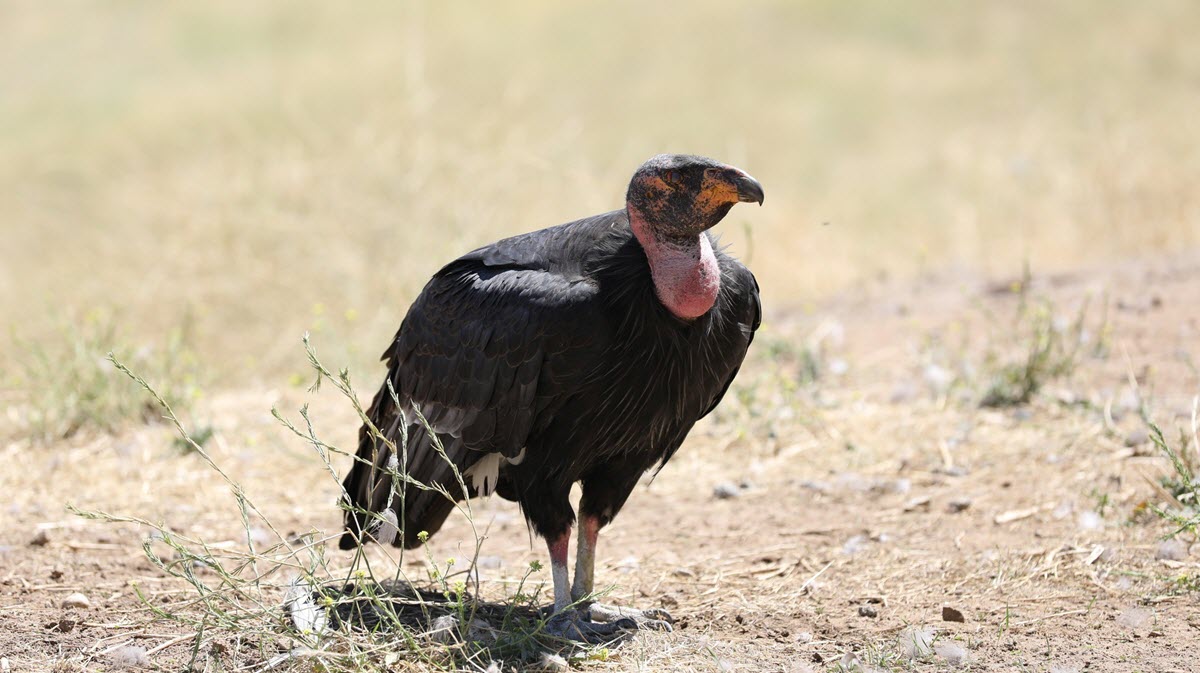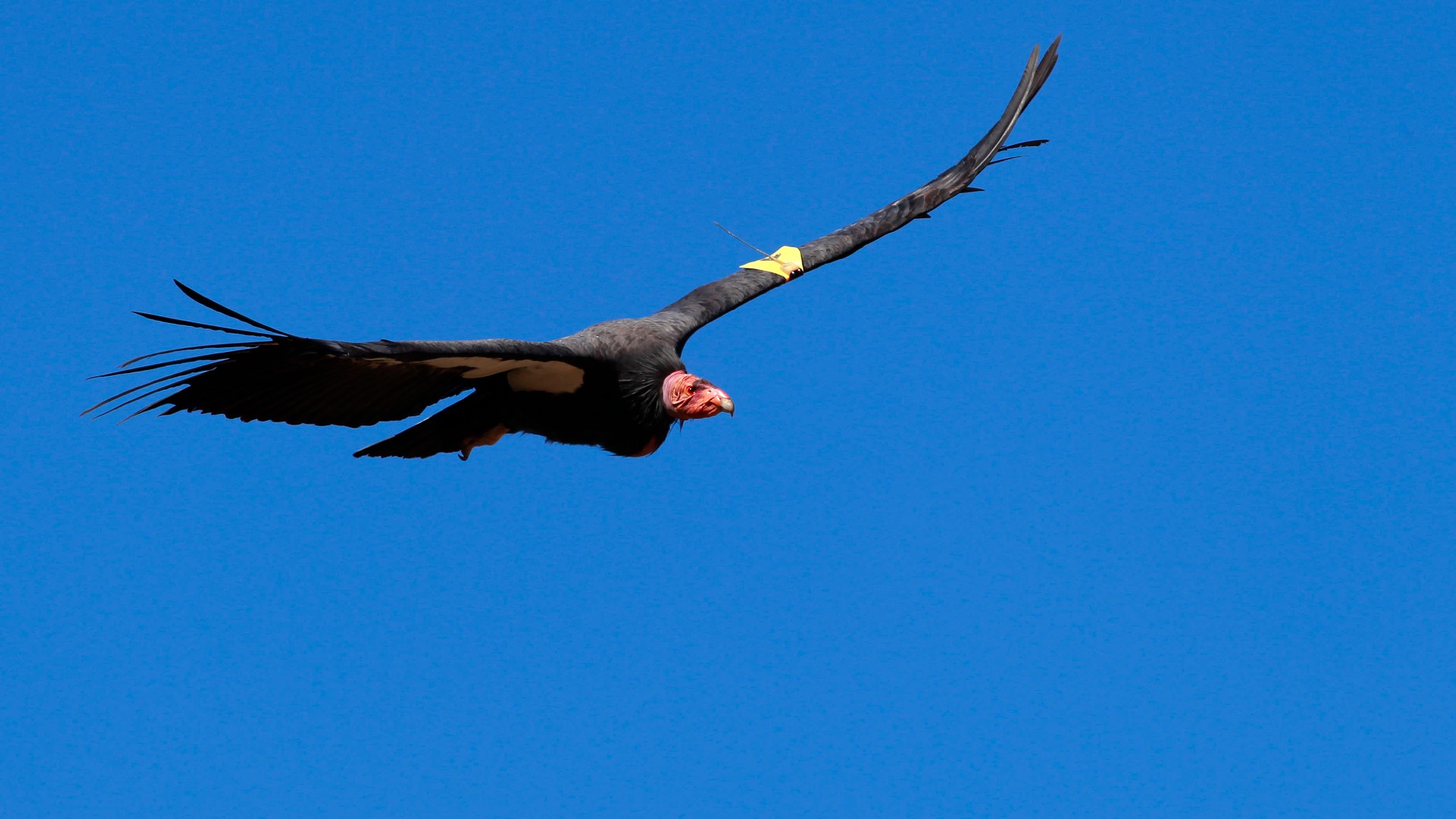
Winged visitors alien to the area have been casting their large shadows over Contra Costa and Stanislaus counties recently.
Preservation group Save Mount Diablo said in a statement Monday they've tracked the paths of six California condors soaring through the skies above Round Valley and Morgan Territory regional preserves, with one even flying a mile or two west of Mount Diablo's summit.
"This is amazing news," said Seth Adams, Save Mount Diablo's land conservation director. "This is the first flock of California condors to visit Contra Costa in 100 years, and the first record of one flying west of Diablo's peaks."
Adams said he's been "chasing condors" for 40 years, since the recovery program began,
Get a weekly recap of the latest San Francisco Bay Area housing news. Sign up for NBC Bay Area’s Housing Deconstructed newsletter.
In the 1970s, biologists found only a few dozen condors remained in the wild, thanks to human activity. Lead poisoning in dead animals shot with human-made bullets has been a major factor in the condors' decline. Condors are scavengers and may accidentally ingest lead bullets in carrion.
A major conservation project was started to save the California condor from extinction in 1980. According to the California Department of Fish and Wildlife website, wild eggs were collected and hatched at the Los Angeles Zoo and San Diego Wild Animal Park to help increase the population. A few condors were taken to the zoos for captive breeding.
But the efforts didn't stop the decline in the wild bird population, so the strategy turned to capturing the rest of the wild population. The population was down to 22 birds at one point. The last wild condor was captured in 1987.
Captive breeding worked and the [program began releasing condors back to the wild in 1992, mostly in the state's central and southern coastal areas.
By 2016, the population grew from 27 in 1987 to 446 by 2016.
"I've been hoping the birds would reclaim Mount Diablo," Adams said "Now they are. This kind of good news is happening again and again. But what it really highlights is the importance of the giant Diablo Range as habitat for the birds--200 miles north-south and 3.5 million acres of high-quality intact habitat."
Save Mount Diablo said in recent years, condors have explored the northern Diablo Range, lengthening their flights northward as they fly closer and closer to Mount Diablo.
In 2021, a California condor flew into Contra Costa County for the first time in more than 100 years, taking an exploratory flight into new territory in the Round Valley-Morgan Territory area.
Last year, another condor was tracked soaring over Brushy Peak Regional Preserve in June, making it the second known California condor in the Mount Diablo area in more than 100 years.
Save Mount Diablo said radio tags or GPS transmitters are placed on all condors, because there are so few, and each one is important to the overall population. The GPS transmitters and subscription service were partially funded by grants from Save Mount Diablo's Mary Bowerman Science and Research program.
Officially, condors 692, 726, 943, and 1021, have flown close to Mount Diablo in Contra Costa County, spending several hours over Round Valley and Morgan Territory Regional Preserves. Condor 692 flew the closest to Mount Diablo, passing a mile or two west of its summit.
Condor 692 (a 10-year-old male originally released at Pinnacles National Park) and condor 726 (a 9-year-old female originally released in Big Sur) are regularly seen at Pinnacles National Park and have nested there since 2019.
Of the six condors that flew near Mount Diablo, three have been treated for lead poisoning at some point in their lives. In 2021, Condor 943 was seen with a beer can stuck over his lower beak that he could not get off and made it impossible for him to eat. Biologists were able to trap him after more than two weeks and removed the can.
Save Mount Diablo said the incident reinforced the importance of the "Leave No Trace" ethic in wild places.
"We are excited to see more California condors from Pinnacles National Park continue to expand their range as they explore Mount Diablo and surrounding mountains. A number of condors are outfitted with GPS trackers and that is how we know when they fly great distances from Pinnacles," said Alacia Welch, the condor program manager for Pinnacles National Park, in the statement.
These flights could be the first step towards the condors expanding their range further north, though Save Mount Diablo said it might be years before condors nest in Contra Costa County.
Condors need cavities for nesting, so they look for cliffs, large rocky areas, or mature redwood trees with large hollows. They also require good foraging habitat (relatively undeveloped areas, including rangelands) and water to thrive.
Save Mount Diablo said the six condors ended their day by flying back down south to roost on a communications tower at Mount Oso, north of Del Puerto Canyon in Stanislaus County, where several of the other juvenile condors were flying around.
In 2019, new laws took effect in California banning lead ammunition when hunting wildlife throughout the state.



